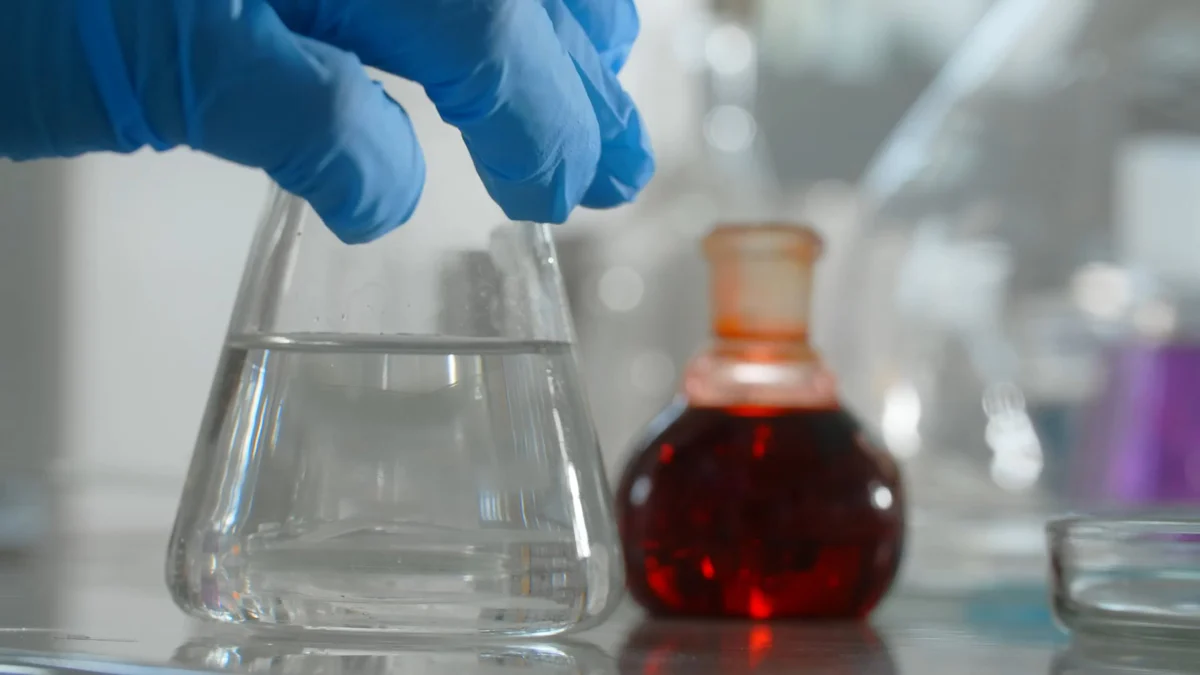Understanding Fluidized Monomer Freezing Technology

Fluidized monomer freezing technology revolutionises the way industries handle monomers. This innovative approach involves suspending solid particles in a fluid-like state, allowing for efficient heat transfer and uniform freezing. Its significance in modern industry cannot be overstated. Companies utilise this technology to enhance production processes, ensuring high-quality outputs. The core benefits include improved efficiency, reduced energy consumption, and enhanced material properties. The Fluidized Monomer Freezer stands out as a pivotal tool, offering precise control over the freezing process, which is crucial for maintaining the integrity of sensitive materials.
The Science Behind Fluidized Monomer Freezing

Understanding Fluidization
Fluidization plays a crucial role in the operation of a Fluidized Monomer Freezer. This process involves suspending solid particles in a fluid-like state, which enhances heat transfer and ensures uniform freezing.
Principles of Fluidization
Fluidization occurs when a fluid, usually a gas or liquid, flows through a bed of solid particles at a velocity sufficient to suspend them. This creates a fluid-like state where the particles can move freely. The principle relies on balancing the upward force of the fluid with the gravitational pull on the particles. This balance allows for efficient mixing and heat transfer, which is essential in freezing processes.
Role in Monomer Processing
In monomer processing, fluidization ensures that each particle receives equal exposure to the freezing medium. This uniformity is vital for maintaining the quality and integrity of the monomers. The Fluidized Monomer Freezer utilises this principle to achieve rapid and consistent freezing, which is particularly beneficial in industries where precise temperature control is necessary.
Freezing Processes in Monomer Technology
The freezing process in monomer technology involves several techniques designed to optimise the quality and efficiency of the final product.
Techniques Used
Hydro-fluidisation Freezing: This technique uses agitating jets to increase surface heat transfer rates, resulting in rapid freezing. It minimises dehydration and preserves the flavour and texture of the product.
Fluidized Bed Freezing: Strong cold winds create a fluidised bed, allowing for surface and deep freezing. This method aims to produce high-quality frozen products by ensuring even distribution of airflow.
IQF (Individually Quick Frozen) Freezing: This method forms a strong cold wind vapour flow to achieve a full-fluidised monomer quick-freezing process. It results in fast freezing and improved output.
Impact on Material Properties
The impact of these freezing techniques on material properties is significant. Rapid freezing prevents the formation of large ice crystals, which can damage the structure of the material. By maintaining smaller ice crystals, the Fluidized Monomer Freezer preserves the integrity and quality of the monomers. This preservation is crucial for industries that require high-quality outputs, such as polymer manufacturing and chemical processing.
Applications and Benefits of Fluidized Monomer Freezer

Industrial Applications
Fluidized monomer freezing technology finds extensive use in various industrial sectors. Its ability to enhance efficiency and maintain material quality makes it indispensable.
Polymer Manufacturing
In polymer manufacturing, the Fluidized Monomer Freezer plays a pivotal role. It ensures that polymers like Polyethylene and Polypropylene achieve their desired physical properties. These polymers exhibit a wide range of characteristics, such as density, stiffness, and flexibility. The freezer's precise control over the freezing process helps maintain these properties, ensuring high-quality polymer products. By preventing large ice crystal formation, it preserves the integrity of the polymers, which is crucial for producing durable and reliable materials.
Chemical Processing
Chemical processing also benefits significantly from fluidized monomer freezing technology. The Fluidized Monomer Freezer enhances the efficiency of chemical reactions by providing uniform temperature control. This uniformity is essential for maintaining the stability and quality of chemical compounds. Industries rely on this technology to optimise their processes, ensuring consistent and high-quality outputs. The freezer's ability to handle sensitive materials with precision makes it a valuable asset in chemical processing.
Benefits of the Technology
The advantages of using a Fluidized Monomer Freezer extend beyond its applications. It offers several benefits that improve industrial processes and product quality.
Efficiency Improvements
One of the primary benefits of this technology is its ability to improve efficiency. The Fluidized Monomer Freezer reduces energy consumption by optimising the freezing process. It achieves rapid and uniform freezing, which minimises the time required for production. This efficiency translates into cost savings for industries, making it an attractive option for companies looking to enhance their production capabilities.
Enhanced Material Quality
The technology also enhances material quality. By preventing the formation of large ice crystals, the Fluidized Monomer Freezer preserves the structural integrity of materials. This preservation is crucial for industries that require high-quality outputs, such as polymer manufacturing and chemical processing. The freezer ensures that materials retain their desired properties, resulting in superior products that meet industry standards.
Challenges and Innovations in Fluidized Monomer Freezing
Current Challenges
Technical Limitations
Fluidized monomer freezing technology, while advanced, faces several technical limitations. The process requires precise control over fluidisation parameters, such as gas velocity and particle size. These factors significantly influence the efficiency of the freezing process. Engineers must carefully calibrate equipment to maintain optimal conditions. Any deviation can lead to uneven freezing, affecting product quality. Additionally, the complexity of the system demands skilled operators, which can pose a challenge for industries lacking trained personnel.
Cost Considerations
Implementing fluidized monomer freezing technology involves substantial costs. The initial investment in specialised equipment can be high. Industries must also consider ongoing maintenance expenses. The need for skilled labour further adds to operational costs. Despite these financial challenges, many companies find the long-term benefits, such as improved efficiency and product quality, justify the investment. However, smaller enterprises may struggle to adopt this technology due to budget constraints.
Innovations and Future Trends
Emerging Technologies
Recent innovations in fluidized monomer freezing technology promise to address existing challenges. Researchers are developing advanced control systems that automate the fluidisation process. These systems enhance precision and reduce the need for manual intervention. Additionally, new materials for constructing fluidized beds improve durability and efficiency. These advancements aim to make the technology more accessible and cost-effective for a broader range of industries.
Research and Development Focus
Ongoing research and development focus on enhancing the speed and output of fluidized monomer freezing. Traditional methods often lag behind in these areas. By contrast, innovations in fluidized monomer freezing significantly improve freezing speed and output. Researchers are exploring novel techniques to further optimise the process. They aim to reduce energy consumption and minimise environmental impact. The future of fluidized monomer freezing technology looks promising, with continuous improvements expected to drive its adoption across various sectors.
Fluidized monomer freezing technology plays a crucial role in modern industry. It enhances production processes and ensures high-quality outputs. This technology offers several benefits:
Efficiency: It reduces energy consumption and improves production speed.
Material Quality: It preserves the integrity of materials by preventing large ice crystal formation.
Industries such as polymer manufacturing and chemical processing rely on this technology for its precision and reliability. Future developments promise to address current challenges, making it more accessible and cost-effective. Continuous innovations will likely drive its adoption across various sectors, ensuring its relevance in the years to come.
See Also
Innovative Tunnel Freezer Solutions For Freezing Challenges
Essential Tips For Quick Freezing Compressors In Food
Efficient Operation Of Nitrogen Freezing Tunnels Explained

